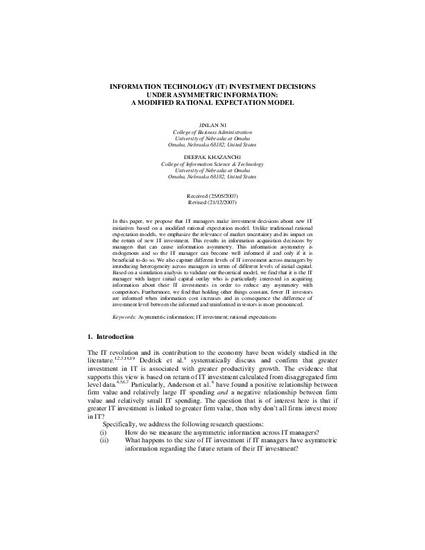
In this paper, we propose that information technology (IT) managers make investment decisions about new IT initiatives based on a modified rational expectation model. Unlike traditional rational expectation models, we emphasize the relevance of market uncertainty and its impact on the return of new IT investment. This results in information acquisition decisions by managers that can cause information asymmetry. This information asymmetry is endogenous and so the IT manager can become well informed if and only if it is beneficial to do so. We also capture different levels of IT investment across managers by introducing heterogeneity across managers in terms of different levels of initial capital. Based on a simulation analysis to validate our theoretical model, we find that it is the IT manager with larger initial capital outlay who is particularly interested in acquiring information about their IT investments in order to reduce any asymmetry with competitors. Furthermore, we find that holding other things constant, fewer IT investors are informed when information cost increases and in consequence the difference of investment level between the informed and uninformed investors is more pronounced.
Available at: http://works.bepress.com/khazanchi/32/

Electronic version of an article published as ." International Journal of Information Technology and Decision Making (IT&DM), Volume 8, Issue 1, pp. 55-72. DOI: 10.1142/S0219622009003260 © 2009 World Scientific Publishing Company [Journal URL]